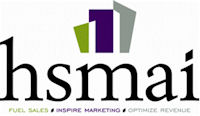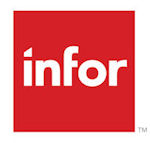Strategies Outlined to Counteract Rising Costs, Generate Increased Profits in Hospitality Industry
McLean, Va. (September 13, 2013) – The Hospitality Sales and Marketing Association International (HSMAI) today announced the release of “Nine Ways to Pull More Revenue Through to Your Bottom Line,” a white paper commissioned in partnership with Infor, a leading hospitality enterprise software company.
In the white paper, Trevor Stuart-Hill, CRME, president of Revenue Matters, offers nine solutions designed to help hotel managers increase profitability amidst a climate of rising costs, which is offsetting recent RevPAR recovery.
“Escalating costs are the greatest factor limiting bottom-line performance for many properties around the country,” Stuart-Hill said. “Hotels and resorts are facing enough demand today that they should be able to turn some impressive profits if they are able to take creative action to improve profitability.”
“While the industry is now seeing revenue and occupancy growth outpace pre-recession levels, net income has stayed flat, dragged down by increasing costs,” said Robert A. Gilbert, CHME, CHBA, president and CEO of HSMAI. “This white paper suggests a number of ways hotel managers can find new ways to generate increased revenue and profit.”
Stuart-Hill’s strategies outline steps hotel managers can employ to increase net revenue in this current cost climate:
1. Focus on forecast performance: It’s important to bring a view of the future to managers at all levels throughout your organization. Ensure everyone understands operational and financial forecasts and the implications of each
2. Engage your associates: Guest satisfaction is oftentimes dependent upon your guests’ experience with numerous associates. Empowering each person in your organization via relational communications versus a hierarchal approach will improve overall employee morale and enable more associates to contribute to the bottom line
3. Optimize market segmentation: Find your most-profitable customers versus profiling them in a broad category. Understanding guest behavior in terms of booking windows, channel preference and spend propensity, among others, are all factors to take into account
4. Match staffing levels to demand: As demand can fluctuate at the last minute, hoteliers need to be more adept at dynamically adjusting staffing to match their business levels
5. Think of inventory as a precious asset versus a perishable commodity: Know the value of certain services on which you could make revenue. For example, allowing an early check-in or late check-out for a nominal fee. Having an idea of what customer you’re serving will guide you in what added services might be of value to them
6. Truly understand ROI of marketing spend: Assign ROI to someone who understands your business holistically and who can assess performance of initiatives throughout a period of time so that you can recourse as necessary
7. Enhance guest experience while generating additional profit: Take stock of opportunities throughout the travel continuum (e.g., dreaming, planning, booking, anticipating, experiencing and sharing). Use platforms such as social media to engage guests in the dreaming and planning stages or illustrate benefits in the booking phase to permit potential guests to easily upgrade or add supplemental services
8. Review charges to ensure they do not make it to the guest folio: Carefully review arrival reports days in advance to verify pricing and package components to a guest’s folio. Upon checkout, confirm all charges are accounted for to avoid surprise charging a guest on a later date for a consumed service that was not added in initially at checkout
9. Proactively manage assets to minimize both downtime and guest satisfaction issues: Closely track energy and efficiency costs against occupancy and seasonality to maximize cost savings. Provide tools to front desk, maintenance and housekeeping staff to allow them to communicate statuses of rooms so that issues such as emergency repairs are conveyed accordingly
“If you don’t already see this happening in your organization, now is the time to take the action needed to capitalize on the full profit potential of the recovery,” Stuart-Hill added. “Look beyond the things you have done in the past, and think differently about what opportunities lay ahead.”
Visit the HSMAI Knowledge Center to download the complete white paper.



